Classics and the Western Canon discussion
Divine Comedy, Dante
>
Paradiso 21: Saturn
date newest »
newest »
 newest »
newest »
 Once again there is no physical transition from one heavenly sphere to the next, no flying through space, we're just there. In Hell and Purgatorio we had to physically climb.
Once again there is no physical transition from one heavenly sphere to the next, no flying through space, we're just there. In Hell and Purgatorio we had to physically climb.
 Roger wrote: "Once again there is no physical transition from one heavenly sphere to the next, no flying through space, we're just there. In Hell and Purgatorio we had to physically climb."
Roger wrote: "Once again there is no physical transition from one heavenly sphere to the next, no flying through space, we're just there. In Hell and Purgatorio we had to physically climb."Good point. And in Hell and Purgatory Dante was often unconscious of the transition, because he was asleep or in a swoon when he was carried down or up. In Heaven, perhaps transporters are used, even without Scotty.
 Canto 20 was the last canto Dorothy Sayers completed before her death in 1957, and here is where Barbara Reynolds picks up on the translation.
Canto 20 was the last canto Dorothy Sayers completed before her death in 1957, and here is where Barbara Reynolds picks up on the translation.
 http://www.lockportstreetgallery.com/...
http://www.lockportstreetgallery.com/...
Salvador Dali: Paradiso Canto 21. “The Celestial Staircase.”
 http://www.blakearchive.org/blake/ima...
http://www.blakearchive.org/blake/ima...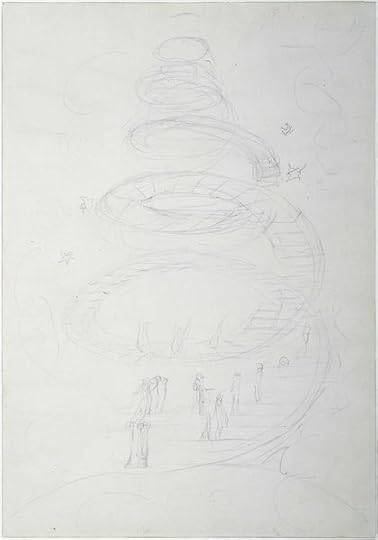
William Blake: Paradiso Canto XXI. "The Spiral Stairway." c. 1824-27.
Barely discernible (it will get better), but Blake is back.
 http://www.worldofdante.org/media/ima...
http://www.worldofdante.org/media/ima...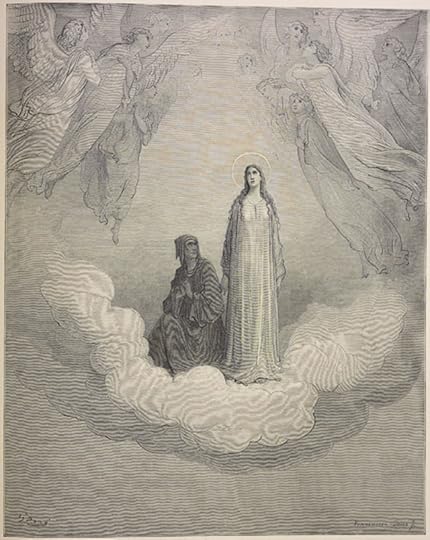
Gustave Doré: Paradiso Canto XXI.1. “Dante Gazes Fixedly at Beatrice and Every Other Thought Is Banished from His Mind.” c.1868. Engraving.
 http://www.worldofdante.org/media/ima...
http://www.worldofdante.org/media/ima...
Gustave Doré: Paradiso Canto XXI.28. “Dante Sees the Formation of a Golden Ladder and Souls Descending from the Steps.” c.1868. Engraving.
 (Clearer image:) http://www.worldofdante.org/media/ima...
(Clearer image:) http://www.worldofdante.org/media/ima...Sandro Botticelli: Paradiso Canto XXI.1. “Ascent to the Seventh Planetary Sphere (Heaven of Saturn); Dante Sees Jacob's Ladder and the Lights of Those Blessed Spirits Who Excelled in the Contemplative Life; Peter Damian Speaks.” c.1480 - c.1495. Drawing.
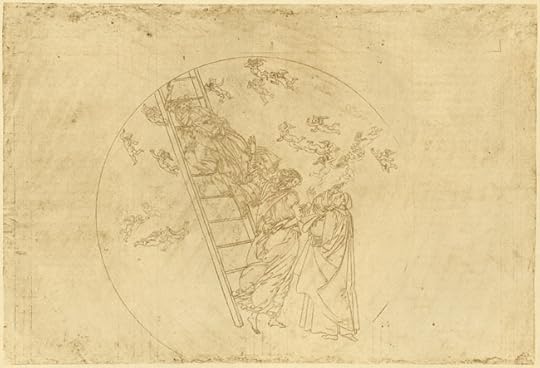
 (Clearer image:) http://www.worldofdante.org/media/ima...
(Clearer image:) http://www.worldofdante.org/media/ima...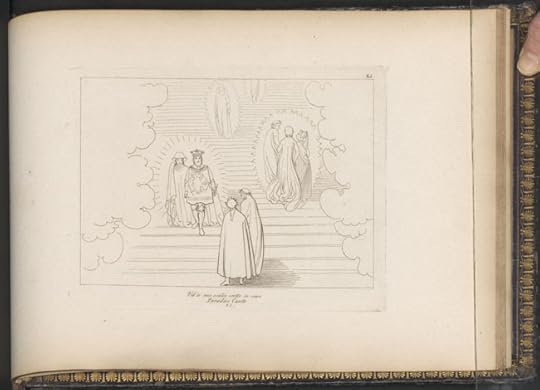
John Flaxman: Paradiso Canto XXI.28. “Dante Sees Ladder of Great Height.” 1793. Engraving.
 Visit link to see thumbnail:
Visit link to see thumbnail:http://www.ivodavidfineart.com/Divine...
Ivo David: Paradiso Canto XXI. "La Scala d'oro." 1975.
 For Paradiso Canto XXI images from the Bodleian Library 14th century manuscript try these:
For Paradiso Canto XXI images from the Bodleian Library 14th century manuscript try these:http://www.bodley.ox.ac.uk/dept/scwms...

Paradiso Canto XXI. “St. Peter Damian at the Foot of the Stairs, Which Souls Ascend and Descend; Saturn on Horseback Swinging Club; a Star, Aquarius and Capricornus.”
http://www.bodley.ox.ac.uk/dept/scwms...
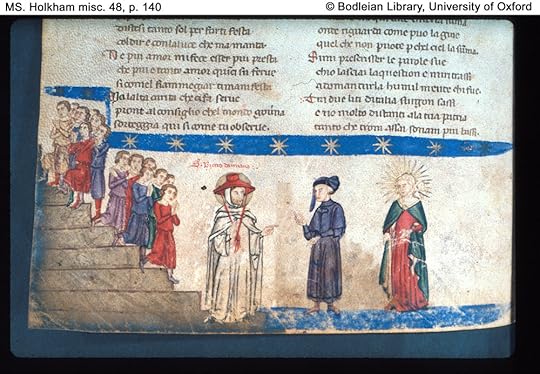
Paradiso Canto XXI. “Souls Ascending and Descending the Stairs; St. Peter Damian Talks to Dante; Beatrice.”
 http://etcweb.princeton.edu/dante/pdp...
http://etcweb.princeton.edu/dante/pdp...
Amos Nattini: Paradiso Canto XXI. "Gia eran li occhi miei rifissi al volto 1923.
Lol. I'm such an idiot :). I tell you, for some reason I was picturing the letters as English-type letters. Made me laugh.
 Lily wrote: "http://etcweb.princeton.edu/dante/pdp...
Lily wrote: "http://etcweb.princeton.edu/dante/pdp...Amos Nattini: Paradiso Canto XXI. "Gia eran li occhi miei rifissi al volto 1923."
Lily, have you found anything about Nattini? Did he do art for the other books?
 Laurele wrote: "Lily, have you found anything about Nattini? Did he do art for the other books?"
Laurele wrote: "Lily, have you found anything about Nattini? Did he do art for the other books?"Yes, he certainly did do the other books as well. I thought I put this link up somewhere, but don't feel like going looking right now:
http://blogs.princeton.edu/graphicart...
Since Princeton is so near, I hope to find out if these folios are accessible to a lay person like myself. I would love to sit with the folios and peruse them for at least an afternoon.
"Amos Nattini was born in Genoa in 1892 and died in Parma in 1985. His work as illustrator began ca. 1911, when he worked on a series of illustrations to poems of D'Annunzio, whose influence is seen in Nattini's work on Dante. The major work of his life was the series (done between 1923 and 1941) of one hundred lithographs dedicated to Dante's Comedy."
Went looking for a bit more. Here is a biography of sorts. It reads as if translated from another language and I have no idea of the reliability of the material, but it comes across as plausible.
http://www.heavymetalartwork.com/amos...
 Lily wrote: "Laurele wrote: "Lily, have you found anything about Nattini? Did he do art for the other books?"
Lily wrote: "Laurele wrote: "Lily, have you found anything about Nattini? Did he do art for the other books?"Yes, he certainly did do the other books as well. I thought I put this link up somewhere, but don'..."
Thanks! Now I remember (I think).
 I reread Ciardi's comments on this Canto this afternoon. I found them quite satisfying. Although I refer mostly to the line-by-line notes, this summary may be of interest:
I reread Ciardi's comments on this Canto this afternoon. I found them quite satisfying. Although I refer mostly to the line-by-line notes, this summary may be of interest: (view spoiler)
 Where were we when we talked about the twelve wise men -- oh, yes, Canto 10. At the time we talked about candidates for the "wise men" including the Doctors of the Church. Here we meet another of them in St. Peter Damiano. If interested, here is the link for an article on all of them as well as one specifically for Damiano (the latter includes images).
Where were we when we talked about the twelve wise men -- oh, yes, Canto 10. At the time we talked about candidates for the "wise men" including the Doctors of the Church. Here we meet another of them in St. Peter Damiano. If interested, here is the link for an article on all of them as well as one specifically for Damiano (the latter includes images).http://en.wikipedia.org/wiki/Doctor_o...
http://en.wikipedia.org/wiki/Peter_Da...
"Dante placed him in one of the highest circles of Paradiso as a great predecessor of Saint Francis of Assisi."
Revisiting Peter Damiano and this Canto after the election of Cardinal Jorge Mario Bergoglio as Pope Francis elicits a whole train of thoughts. Scanning St. Damiano's wiki entry sadly reminds one how intransigent and recurring some evils are.
 For a lovely view of St. Damiano's hermitage, try here:
For a lovely view of St. Damiano's hermitage, try here:http://commons.wikimedia.org/wiki/Fil...
http://en.wikipedia.org/wiki/Fonte_Av...
See Canto 21, lines 106-126:
(view spoiler)
"A humpback ridge called Catria rises there" (109) Ciardi.
http://en.wikipedia.org/wiki/Monte_Ca...
I can't quite figure out what Ostia he was connected with as bishop -- given the dates, I think there may be an error in wiki linkages, but haven't managed to untangle the possibilities.
 As we have reached each new sphere, I have tried to provide us a link or two to contrast Dante's 1300 perspective with how that astronomical place is viewed in our century of space travel. Here is a comparable site for Saturn:
As we have reached each new sphere, I have tried to provide us a link or two to contrast Dante's 1300 perspective with how that astronomical place is viewed in our century of space travel. Here is a comparable site for Saturn: http://solarsystem.nasa.gov/planets/p...
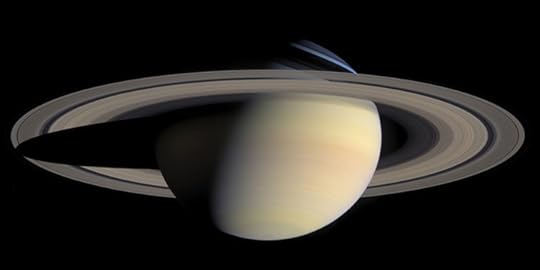
"While cruising around Saturn in early October 2004, Cassini captured a series of images that have been composed into this large global natural color view of Saturn and its rings."
Enjoy the site, even though it doesn't seem to have the scope and depth of, say, the site for Mars. If you find a better one, do let us know. What a beautiful planet with its ethereal rings. Saturn is apparently the last planet visible with the naked eye. In the 1600's, some 300 years after Dante, Galileo, with telescope, identified the existence of what we have come to call the rings of Saturn.
 Back to bird images:
Back to bird images:Ciardi uses grackles in his translation:
"As grackles flock together at first light,
obeying a natural impulse to move as one (35)
to warm their night chilled feathers in glad flight."
http://www.real-austin-texas.com/grac... -- no power lines in 1300, but note the video for a sense of these birds in flight.
Hollander uses rooks:
"And as, following their normal instinct,
rooks rise up together at the break of day,
warming their feathers, stiffened by the cold, (36)
"and some of them fly off, not to return,
while some turn back to where they had set out,
and some keep wheeling overhead, (39)
"just such varied motions did I observe
within that sparkling throng, which came as one
as soon as it had reached a certain rung." (42)
Dante (2012-07-18). Paradiso. (Kindle Locations 8700-8720). Random House, Inc.
http://g900photography.files.wordpres...
It surprised me to have Dante use such dark birds for his image here, but their swirling multitudes seem to fit his vision. (These images do not capture these flocks moving as one, but one can imagine that is what Dante observed at the beginning of the 14th century.)



Dante and Beatrice have risen to the heaven of Saturn where the souls of the contemplatives, manifested as lights, are seen thronging upon the rungs of a golden ladder stretching into the heavens far beyond Dante’s sight. A soul draws near and, in answer to Dante’s question as to why God has assigned him to be his interlocutor, indicates the unfathomable depths of the mystery of predestination. Revealing himself as Peter Damian, he deplores the present degeneracy of his monastery at Fonte Avellana and rebukes the self-indulgence of modern prelates. Other souls, massing round him, utter so loud a cry of execration that Dante’s understanding is overwhelmed.
The Heaven of Saturn: In the story, Saturn is the last of the seven planets on Dante’s journey into Heaven. In the allegory, Saturn figures the life of contemplation and ascetic abstraction from material things. In accordance with the teaching of the Church, Dante represents the contemplative life as higher than the life of action. It should not, however, be imagined that Dante advocated a withdrawal from worldly activity. The cause of God on earth has still to be furthered by the endeavour of men. In Canto xvii, when Dante becomes absorbed in the heavenly truth which he reads in the eyes of Beatrice she bids him turn and look upon the souls of Crusaders, moving, with the swift energy which characterized them, along the pattern of the Cross, for “not in her eyes alone is Paradise”. On the spiritual level, the ascent of Dante to the higher sphere of the contemplatives signifies the passing of the soul from active endeavour to a closer insight of the vision of God.
The Golden Ladder: The golden stair which Dante sees rising from Saturn into the infinite spaces above him is a traditional symbol of the life of contemplation or spiritual vision. Jacob’s ladder was quoted by preachers as a figure of monastic life and the angels of God “ascending and descending on it” were interpreted as signifying the monks who climbed by contemplation up to God and descended by compassion among men.